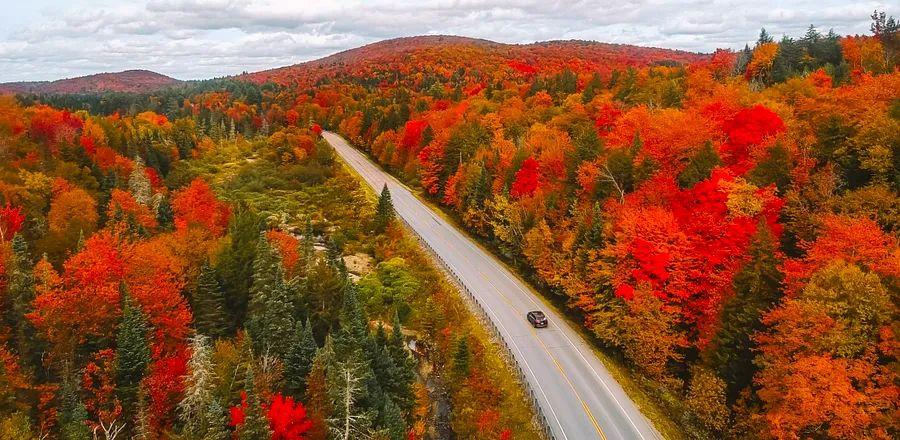The Future of Fall Foliage: What to Expect

When planning trips to experience natural wonders, there's always a level of unpredictability—nature tends to be unpredictable. Autumn foliage is no different. However, as the climate changes, the uncertainty surrounding the fall season may grow even greater.
This is largely due to temperature and precipitation—two critical elements that influence the timing and brilliance of fall colors—which are both directly affected by a warming planet. For those eager to witness the autumn display, here are three key points to consider.
Extended summers could push back the onset of fall colors.
Trees depend on the cooling temperatures of fall as their signal to cease chlorophyll production, the green pigment that helps leaves synthesize food using sunlight. Once chlorophyll production halts, other pigments within the leaves get their moment to shine. These pigments include carotenoids, which contribute to the yellow, orange, and brown shades of autumn, and anthocyanins, which produce the deep reds and purples.
Mukund Rao, an ecoclimatologist and carbon cycle expert at Columbia University’s Lamont-Doherty Earth Observatory, observes that rising summer temperatures are beginning to disrupt this natural cycle in various regions of North America. In recent years, he has noted that trees are retaining their green hues a few days longer into the fall than they typically would. This shift has been particularly evident in areas across the northeastern United States, which boasts many popular spots for fall foliage viewing, including New England and upstate New York.
Rao, along with other researchers, employs a network of cameras known as PhenoCams to analyze shifts in the timing of chlorophyll reduction. This collaborative initiative, which includes scientific institutions worldwide, utilizes time-lapse cameras positioned on elevated structures like rooftops and towers to track seasonal changes in plant life, including when leaves change color, when they drop, and when they emerge in spring.
Rao clarifies, “With longer summers and warmer weather extending into the year, leaves stay green longer, which delays the appearance of autumn colors.”
Drier summers might impact the intensity of fall colors.
According to Rao, summer rainfall is crucial for determining how vibrant fall foliage will be. Trees that receive sufficient moisture during the summer generate the necessary sugars in their leaves to deliver a stunning autumn display.
In regions where climate change induces summer droughts, the vibrancy of fall colors may diminish.
He explains, “In a hypothetical year characterized by high temperatures and minimal rainfall, the trees would experience significant stress. Consequently, the fall colors during such years would lack vibrancy, leading the trees to simply shed their leaves.”
The duration of leaf-viewing seasons could potentially become shorter.
While temperatures influence when leaves begin to change color, it is the decreasing daylight hours in late summer that signal trees to drop their leaves. This aspect of the process remains unaffected (the Earth may be warming, but its orbital rate around the sun stays constant), ensuring that leaf drop timing stays consistent.
As a result, climate change may ultimately lead to a reduction in the peak period for observing fall colors.
Rao states, “The speed at which the transition occurs is accelerating. You experience only a brief display of orange, red, and yellow leaves before they quickly turn brown and fall off.”
What implications does this have for travelers?
When planning a trip to see fall foliage, timing becomes crucial. Although this has always been important, climate change may necessitate even more precise planning.
As fall colors appear later while leaf drop occurs at the usual time, the opportunity to witness the autumn spectacle in its full glory could shrink. Therefore, being flexible with travel dates is more essential than ever. Take recent weather patterns into account when choosing a destination. Additionally, stay updated with foliage reports, such as the interactive prediction map recently published by SmokyMountains.com.

1

2

3

4

5
Evaluation :
5/5